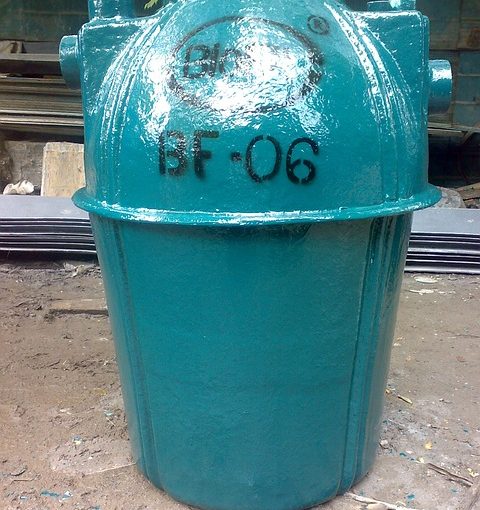If you have a septic system, chances are you don’t think about it often. For the most part, as long as it’s doing what it’s supposed to be doing, you may not even really care about it.
What is a septic system? How big are they? What does it cost to replace one? Arm yourself with the knowledge of what a septic tank is and how to maintain one, in case something goes wrong.
What is a Septic Tank?

About 25 percent of the homes in the United States rely on septic systems. Most septic systems have four components: a pipe leading from the home, a septic tank, a drainage field or leach field, and soil. Microbes in the soil are responsible for removing many of the contaminants from the wastewater you produce before it hits the groundwater. The septic tank itself is a watertight container made out of concrete, fiberglass or polyethylene and is buried underground to hold wastewater. From this wastewater, solids settle to form sludge, and oils come to the surface, known as scum. Special compartments and screens keep the sludge and scum from entering the drainfield.
Tips to Protect Your Septic System
To keep your septic system in good working order, it’s necessary to have it pumped out regularly. How often you do this depends on many factors, including family size, tank size and the volume of solids. For example, if you have a 900 gallon-tank for a family of four, you’ll need to pump it every two years. If you’ve got a 1500-gallon tank, you can get away with every four years. Also, if you have a garbage disposal, you’re dumping more solids into your tank than someone without a disposal — 50 percent more in fact.
Maintaining your septic system not only contributes to the life span of the unit, it also protects the investment in your home. If you don’t have it pumped regularly, it can back up and malfunction, contaminating the groundwater and thus the drinking water. It can also cost thousands of dollars to replace the tank. You could become legally responsible if you have a malfunctioning septic tank or one that’s not in use or in disrepair, which could make your property value plummet.
Pumping your system every couple of years at between $100 and $300 pales in comparison with the average cost of replacing a septic tank, which could run you between $3,000 and $10,000. Get in a regular maintenance plan with a company in your area so you are always on top of your pumping schedule. If you let it go too long, you will be met with some unpleasant signs your tank is overflowing, from an awful smell to backed up toilets. Some of the newer systems feature convenient alert systems when the tank is approaching full capacity.
You have to be careful with your septic system, as its capacity to handle bulky items is much less than a city sewage system. For instance, never flush dental floss, cotton swabs, feminine hygiene products, condoms, diapers, cat litter or paper towels, as they could damage the septic system. Likewise, if you flush chemicals, oil, pesticides, antifreeze or paint down the toilet, these harmful substances can harm the system’s biological treatment process and accumulate in the groundwater. Taking proper care of your septic tank and related system is important to keeping it in tip-top shape.
This article was provided by Matt Jeffries, on-site contract manager and all-around handy man. If you need an extra hand with your plumbing, Matt recommends Doug Turner Plumbing.







